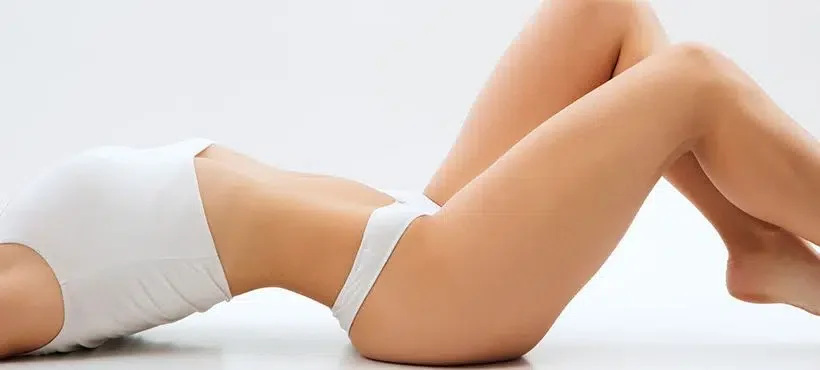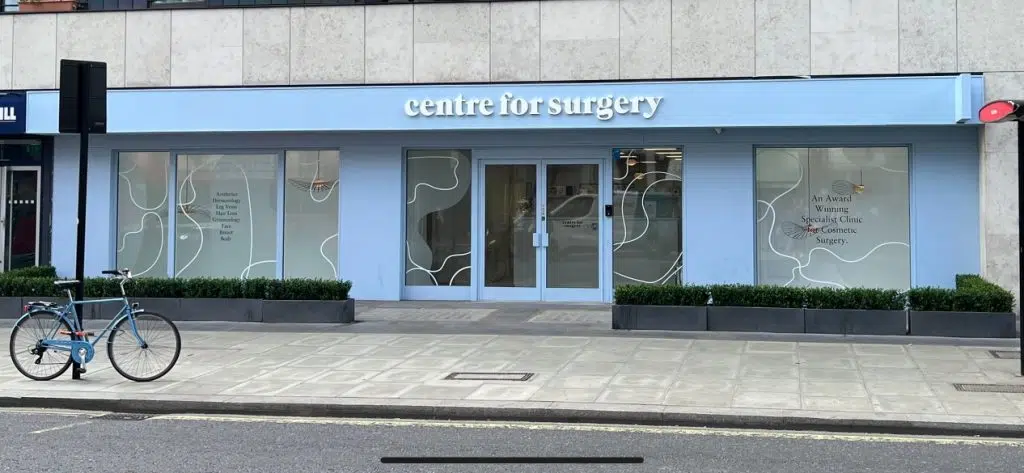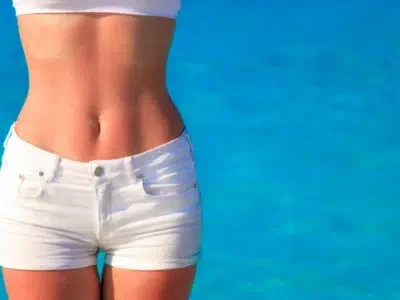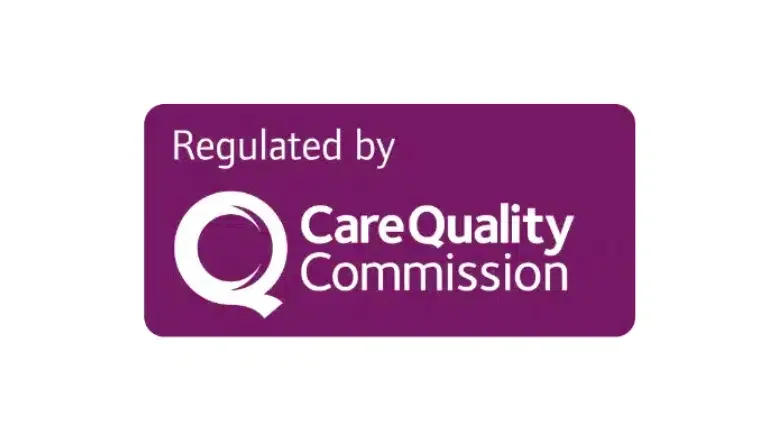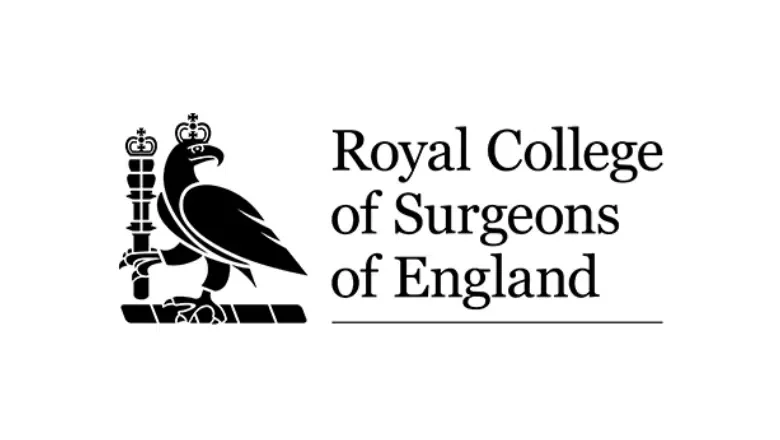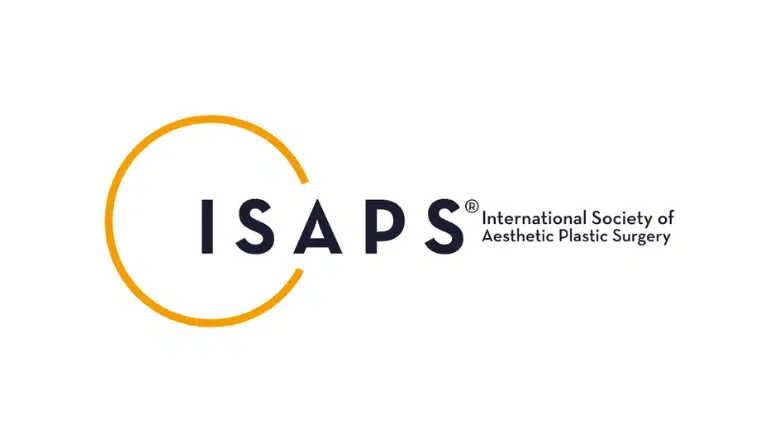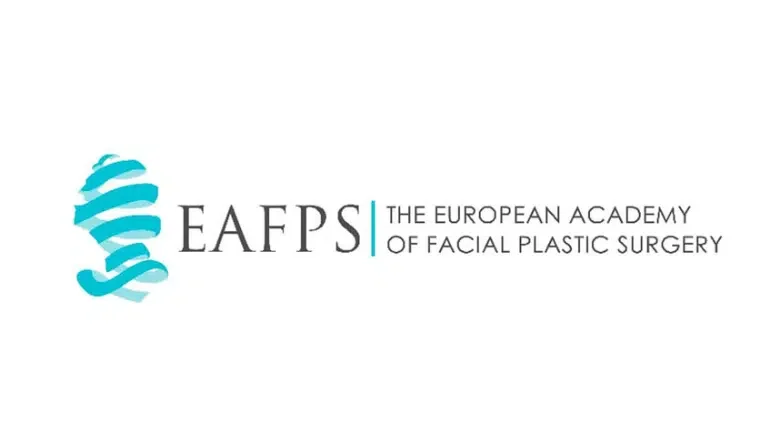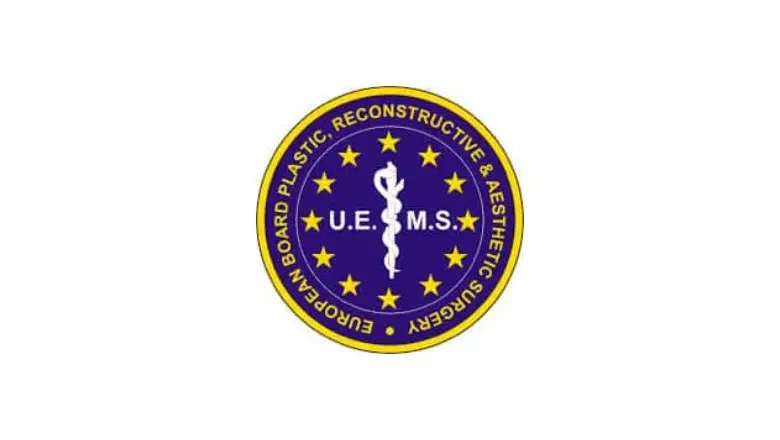Liposuction is a cosmetic surgery procedure designed to eliminate excess fat from unwanted parts of the body. Liposuction could suit you if you are at or near your ideal body weight. Our specialist plastic surgeons have years of experience performing all types of liposuction surgery to help people achieve a more contoured and sculpted physique. Here, we answer your most commonly asked questions about all aspects of liposuction surgery.
RELATED: Liposuction Before And After Photos
LIPOSUCTION OVERVIEW
What is liposuction?
Liposuction is a minimally invasive body contouring procedure designed to get rid of excess fat. The procedure involves sucking out the fat using a cannula connected to negative pressure suction. Liposuction is beneficial for treating both smaller and larger body areas.
What is the difference between liposuction and liposculpture?
Liposuction involves the removal of stubborn fat, using a cannula to suck out the fat. Liposculpture is more suitable for treating smaller areas to achieve definition in people who are keen to achieve a sculpted or contoured look.
What type of fat is liposuction designed to remove?
Liposuction is designed to remove subcutaneous fat, which is the type of fat found immediately beneath the skin. As people begin to accumulate excess weight, the subcutaneous fat enlarges. When weight loss occurs, the subcutaneous fat is the first area for fat to be lost. Liposuction is not designed to remove visceral fat which is found around the internal body organs.
Can liposuction improve my physique?
Liposuction can significantly improve your body shape and physique. Once you have reached your target weight, liposuction is suitable for sculpting your body. Lipo is useful for treating several body areas, including
- Abdomen
- Thighs
- Buttocks
- Back
- Hips
- Arms
- Breasts
Micro liposuction can be used to remove fat from beneath the chin.
What are the different types of liposuction?
The main types of liposuction include:
- Traditional liposuction is also known as SAL
- Power-assisted liposuction, or PAL
- Laser-assisted liposuction, or LAL
- Ultrasound-assisted liposuction, or UAL
What is tumescent liposuction?
Tumescent liposuction is a type of liposuction that involves the injection of a large amount of a solution called “tumescent fluid” into the area of the body where fat is to be removed. The solution contains a local anaesthetic (lidocaine) and a vasoconstrictor (epinephrine), which helps minimise blood loss during the procedure and numbs the area to reduce pain. The solution causes the fat cells to become swollen and firm, making them easier to remove with a cannula (a thin hollow tube) inserted through small incisions in the skin. Tumescent liposuction is considered to be a less invasive and less painful option than traditional liposuction.
What is Tickle Lipo?
Tickle Lipo, also known as Tickle Liposuction, is a form of liposuction that uses a device called the Tickle Lipo wand to break up and suction out unwanted fat from specific areas of the body. The wand uses a combination of vibration and suction to loosen and remove fat, resulting in less trauma to the surrounding tissue than traditional liposuction methods. Tickle Lipo is considered a minimally invasive procedure and is often used for targeted fat reduction in areas such as the abdomen, hips, thighs, and arms. It is often done under local anaesthesia, and recovery time is fast.
What is Microaire liposuction?
Microaire liposuction, also known as power-assisted liposuction (PAL), is a type of liposuction that uses a specialised cannula (a thin tube) with a built-in motor to break up and suction out the fat. The cannula is inserted through small incisions in the skin, and the motor oscillates back and forth at high speeds to break up the fat. This can make the procedure faster and less traumatic than traditional liposuction and may result in less swelling and bruising. The procedure can be used to remove fat from various parts of the body, including the stomach, thighs, and hips.
During the procedure, a numbing solution is injected into the area to be treated, and the cannula is inserted through small incisions. The cannula is then moved back and forth to break up the fat, which is then suctioned out through the cannula. The procedure is usually done under local anaesthesia, but in some cases, general anaesthesia may be used. After the procedure, patients may experience swelling, bruising, and some discomfort. These side effects usually subside within a few days to a week. The procedure results are usually visible within a few weeks, and the final results may take several months to be fully visible.
What is power-assisted liposuction (PAL)?
Power-assisted liposuction (PAL) is a type of liposuction that uses a specialised cannula that is attached to a motor. The cannula is inserted into the fatty area through a small incision, and the motor is used to vibrate the cannula back and forth. This vibration helps to break up the fat, making it easier to suction out.
PAL is thought to be less traumatic to the surrounding tissue, resulting in less pain, bleeding, and swelling. It also allows for more precise and efficient removal of fat, and can be used in areas that are harder to treat with traditional liposuction techniques.
PAL is typically used to remove fat from the abdomen, hips, thighs, back, and upper arms. It is considered a safe and effective method for fat removal.
What is SAFElipo?
SAFELipo is a liposuction technique that aims to minimise the risks associated with traditional liposuction procedures. It is also referred to as “tumescent liposuction” and is considered safer than traditional liposuction because it uses a tumescent solution, which is a mixture of saline, lidocaine, and epinephrine, to reduce bleeding and swelling during the procedure. This technique is often used for body contouring and fat removal.
What is laser liposuction?
Laser liposuction, also known as laser lipolysis or laser-assisted liposuction, is a type of liposuction that uses a laser to melt and remove fat. The procedure involves making small incisions in the skin, through which a laser fibre is inserted and directed at the area of fat to be removed. The laser energy causes the fat cells to release their contents, which are then suctioned out of the body using a cannula (a thin hollow tube).
The heat from the laser can also cause the skin to tighten, which may result in improved skin tone and texture following the procedure. In addition to fat removal, laser liposuction can also be used for skin tightening, cellulite reduction, and improving blood circulation in the treated area.
RELATED: Risks of Laser Lipo – Why Choose Power-Assisted Liposuction?
What is Vaser liposuction?
Vaser liposuction (Vaser stands for Vibration Amplification of Sound Energy at Resonance) is a type of liposuction that uses ultrasonic energy to remove fat. It is also known as ultrasonic liposuction. The procedure involves making small incisions in the skin, through which a cannula (a thin hollow tube) equipped with a small ultrasonic probe is inserted. The ultrasonic energy is directed at the fat cells, which causes them to release their contents, which are then suctioned out of the body.
Vaser liposuction is considered to be more precise than traditional liposuction and is often used to target smaller, more delicate areas of the body, such as the face, neck, and arms. The ultrasonic energy also causes less trauma to the surrounding tissue, resulting in less pain, swelling, and bruising.
Can lipo make me skinny?
Liposuction is a body contouring procedure that is used to remove isolated pockets of fat that do not respond to diet and exercise. It is not a weight loss method and it is not intended to make a person skinny.
A person’s body shape and size are determined by a combination of factors, including genetics, lifestyle, and overall health. Liposuction can help to improve the shape and contour of specific areas of the body, such as the abdomen, thighs, or hips, by removing excess fat. However, it does not address overall body weight or the distribution of fat throughout the body.
Can fat grow back after liposuction?
While liposuction can remove excess fat cells from the body, it is not a permanent solution for weight management. It is possible for fat to return after liposuction if the patient does not maintain a healthy lifestyle, including a balanced diet and regular exercise.
RELATED: How to Prevent Weight Gain after Liposuction – Top Tips to Maintain a Stable Weight
Can you get liposuction twice?
Yes, it is possible to get liposuction more than once. However, it is important to note that liposuction is not a weight loss method and is best suited for people who have reached a stable weight and have isolated pockets of fat that do not respond to diet and exercise.
Will I get loose skin after liposuction?
Liposuction is a procedure that removes unwanted fat from specific areas of the body, and can help to improve the contours of the body. However, in some cases, liposuction can lead to loose skin, especially in areas where the skin has poor elasticity. Factors such as age, genetics, and overall skin health can influence the likelihood of loose skin after liposuction.
RELATED: Loose Skin after Liposuction – Top Tips for Prevention and Treatment
How much fat can be removed with liposuction?
The amount of fat that can be safely removed during liposuction varies from person to person and is dependent on several factors, such as the individual’s body type, the location of the fat deposits, and the patient’s overall health.
Typically, liposuction removes between 2 and 5 litres of fat, although this can vary depending on the area being treated and the patient’s individual circumstances. Removing more than 5 litres of fat during a single procedure is generally considered to be unsafe.
Can liposuction get rid of belly fat?
Abdominal liposuction can be an effective way to remove stubborn fat deposits and improve the contours of the stomach. It’s important to note that liposuction is not a solution for belly fat if individuals fail to maintain a healthy lifestyle after surgery. Specifically, it targets the subcutaneous fat, which is the fat layer located under the skin. If you have a large amount of visceral fat (fat around the organs) that is causing your belly to bulge, liposuction alone may not be enough to address the issue.
RELATED: How To Get Rid Of Stomach Overhang – Belly Fat
Can liposuction get rid of stretch marks?
Liposuction is a body contouring procedure that is used to remove isolated pockets of fat that do not respond to diet and exercise. It is not intended to remove stretch marks.
Stretch marks, also known as striae, are a common skin condition that occurs when the skin is stretched rapidly. They are often caused by pregnancy, weight gain or loss, and hormonal changes. They appear as lines or bands on the skin and are usually red or purple in colour, but over time they may fade to a silvery white colour.
Liposuction can help to improve the shape and contour of specific areas of the body by removing excess fat, but it cannot remove or improve stretch marks. Stretch marks are caused by damage to the underlying layers of skin, not by excess fat.
In some cases, after liposuction, the skin may appear smoother and tighter, but this will depend on the amount of fat removed and the elasticity of the skin. Therefore, it’s not guaranteed that liposuction can get rid of stretch marks.
Can Liposuction fix cellulite?
Liposuction is primarily designed to remove stubborn fat deposits and improve body contouring. While it can provide some improvement in the appearance of cellulite, it is not specifically intended to treat or eliminate cellulite. In some cases, liposuction may even exacerbate the appearance of cellulite if the skin does not retract adequately after the procedure.
RELATED: Stubborn Fat, Skin Laxity or Cellulite – What Are The Differences?
Cellulite is a result of the fibrous connective tissue bands that tether the skin to the underlying muscle, creating a characteristic dimpled appearance. It is a common condition that affects both men and women, though it is more prevalent in women due to differences in fat distribution and connective tissue structure.
Other treatments and procedures may be more suitable to address cellulite, such as laser treatments, radiofrequency devices, or subcision techniques.
Can liposuction affect pregnancy?
Liposuction, like any surgical procedure, carries some risks and potential complications, and it’s important to consider all factors before deciding to have the procedure. However, liposuction is not expected to affect pregnancy or future pregnancies.
Women who are considering liposuction should wait until after they have completed childbearing, as weight gain during pregnancy can cause changes to the body that may affect the results of the procedure.
If you are considering liposuction and have plans for pregnancy in the future, it’s best to have a consultation with a qualified plastic surgeon at Centre for Surgery to discuss the best options.
Can liposuction reverse diabetes?
Liposuction is a cosmetic procedure that is used to remove unwanted fat from specific areas of the body and can improve the contours of the body. It is not a treatment for diabetes, and it will not reverse diabetes.
Diabetes is a chronic metabolic disorder that affects the way the body processes glucose (sugar). It is caused by a deficiency of a hormone that regulates glucose levels in the blood, or by the body’s inability to use the hormone effectively. Liposuction will not change these underlying metabolic issues.
While liposuction can remove excess fat, which has been linked with diabetes, it is not a substitute for a healthy diet and regular exercise, which are essential for managing diabetes.
Is stomach liposuction worth it?
Tummy liposuction can be an effective way to remove stubborn fat deposits and improve the contours of the stomach, but it is not a weight loss procedure and should not be used as a substitute for healthy lifestyle choices.
Is liposuction beneficial after weight loss?
Liposuction can be beneficial after weight loss for individuals who have reached their desired weight but still have pockets of stubborn fat that do not respond to diet and exercise. Liposuction can help to contour the body and improve the appearance of certain areas, such as the thighs, hips, and abdomen.
What are the alternatives to liposuction?
There are several alternatives to liposuction for removing unwanted fat from the body. Some of the most popular include:
- Non-invasive fat reduction procedures, such as CoolSculpting or SculpSure, use controlled cooling or laser energy to freeze and destroy fat cells, which are then naturally eliminated by the body.
- Non-surgical body contouring treatments, such as Vanquish or Exilis Ultra, use radiofrequency energy to heat and shrink fat cells, causing them to be eliminated by the body.
- Diet and exercise are considered the most natural ways to reduce fat, but they may require a significant time commitment and dedication to see results.
- Medications: For weight management.
- Bariatric surgery is a weight-loss surgery that involves reducing the size of the stomach and/or rerouting the small intestine to limit food intake and nutrient absorption.
IDEAL CANDIDATES FOR LIPOSUCTION
Am I suitable for liposuction?
The best candidates for liposuction are generally:
- Healthy individuals with a stable weight and realistic expectations
- People with good skin elasticity, as the skin needs to be able to shrink and conform to the new shape of the body after the fat is removed.
- People with specific areas of fat that they would like to remove, such as the abdomen, thighs, hips, or chin.
However, it’s important to remember that liposuction is a surgical procedure and carries some risks and potential complications. It’s not suitable for everyone. People with certain medical conditions, such as heart disease, diabetes or blood clotting disorders, may not be good candidates for the procedure.
What is the best age for liposuction?
You will need to be a minimum of 18 years old before having a consultation at Centre for Surgery. The best age for liposuction varies for each individual, but typically it’s recommended for adults who are in good overall health and have reached a stable weight.
Can I have liposuction after a C-section?
It is generally recommended to wait at least six months to a year after a C-section before considering liposuction. This is because the abdominal area needs time to fully heal and settle after the surgery.
Additionally, liposuction is not recommended for women who are planning to have more children or who are currently pregnant.
LIPOSUCTION RECOVERY
Is liposuction recovery painful?
Recovery from liposuction can be uncomfortable, but the level of pain can vary depending on the individual and the extent of the procedure. The most common symptoms during the recovery period include swelling, bruising, and soreness in the treatment area.
Pain medication will typically be prescribed to help manage any discomfort and most people are able to return to their normal activities within a week or two after the procedure. However, it can take several weeks or even months for the swelling and bruising to fully subside and for the final results to be visible.
Your surgeon will provide you with specific post-operative instructions to follow, including information on how to care for the incision site and how to manage any pain or discomfort. Some common post-operative care instructions may include:
- Wearing a compression garment to help reduce swelling and support the treatment area
- Avoiding strenuous activity or heavy lifting for several weeks
- Keeping the incision site clean and dry
- Applying cold compresses to the treatment area to help reduce swelling
- Taking pain medication as directed
RELATED: Liposuction recovery top tips
Does lipo result in scars?
Liposuction is a surgical procedure that involves making small incisions in the skin to remove unwanted fat from specific areas of the body. As with any surgical procedure, there is the potential for scarring.
The size and location of the incisions will vary depending on the area being treated and the method of liposuction being used. The incisions are usually made in inconspicuous areas, such as the natural creases of the skin, to minimize the appearance of scars.
After the procedure, the incisions will be closed with stitches or surgical tape.
With proper care and time, most scars will fade and become less noticeable. However, the visibility of the scar will depend on the patient’s individual healing process, the size and location of the incision, and the technique used to close the incision.
How can liposuction scars be minimised?
The liposuction incisions are very small – often just a few mm. It is still important to take care of your incision areas to optimise scar appearance. A key point is to avoid traumatising the incision sites, leaving them well alone and keeping the dressings on for the recommended duration of time. Steristrips may have been used to cover the incisions. Steristrips should be allowed to fall off on their own. The nursing team may remove them at your follow-up appointment.
RELATED: What Liposuction Scars Can I Expect?
Avoid wearing tight-fitting clothing, which may catch on the incisions. The vast majority of incisions will heal well in about two weeks with compliance with the postoperative instructions. Once the incisions have healed, your surgeon may be able to advise you on optimum scar appearance methods. Silicone gels and medical-grade brown tape are often used to improve scar cosmesis. Avoid or minimise sun exposure to improve scar healing.
How long does it take for liposuction swelling to go away?
The length of time it takes for swelling to disappear after liposuction can vary depending on several factors, including the individual’s body type, the extent of the procedure, and the patient’s overall health. Typically, swelling will be most noticeable in the first few days following the procedure and will gradually decrease over the next several weeks.
Most people are able to return to their normal activities within a week or two after the procedure, but it can take several weeks or even months for the swelling and bruising to fully subside and for the final results to be visible.
The recovery process can be accelerated by applying cold compresses to the treatment area, wearing a compression garment, and avoiding strenuous activity or heavy lifting for several weeks. Following the post-operative instructions provided by your surgeon will also help to minimise the risk of complications and promote healing.
RELATED: How To Reduce Swelling and Bruising After Liposuction
LIPOSUCTION RESULTS
What is the best way to reduce scarring after liposuction?
The best way to reduce scarring after liposuction is to follow the post-operative instructions provided by your surgeon, which will typically include information on how to care for the incision site and how to manage any pain or discomfort. Here are a few tips on how to minimize scarring after liposuction:
- Keep the incision site clean and dry: Follow your surgeon’s instructions on how to clean and care for the incision site. Keep the incision site dry and avoid submerging it in water (e.g. swimming, bathing, etc.) for at least a week or two.
- Wear a compression garment: Wearing a compression garment as directed by your surgeon can help to reduce swelling and support the treatment area, which can help to minimise scarring.
- Avoid strenuous activity or heavy lifting: Avoid strenuous activity or heavy lifting for several weeks after the procedure to allow time for the incision site to heal.
- Keep the incision site moisturised: A fragrance-free lotion or ointment can help keep the skin supple and promote healing.
- Avoid sun exposure: Sun exposure can cause hyperpigmentation (darkening) of scars, so it’s important to keep the incision site covered and to use sunscreen when going outdoors.
- Avoid smoking: Smoking can impede the healing process and increase the risk of complications, so it’s important to avoid smoking during the recovery period.
LIPOSUCTION RISKS AND COMPLICATIONS
Is liposuction safe?
Liposuction, like any surgical procedure, carries certain risks and potential complications. However, when performed by a qualified and experienced plastic surgeon, it is considered safe.
Some of the risks associated with liposuction include:
- Infection: There is a risk of infection at the incision site, but this risk can be minimized by following the post-operative instructions provided by your surgeon.
- Blood clots: Blood clots can occur in the legs or lungs and can be serious or even fatal.
- Excessive bleeding: Patients rarely experience excessive bleeding during or after the procedure.
- Scarring: Liposuction does leave scars, but they are usually small and located in inconspicuous areas, such as the natural creases of the skin.
- Numbness or tingling: There may be temporary numbness or tingling in the treatment area.
- Anaesthesia risks: As liposuction is done under anaesthesia, there are risks associated with anaesthesia, such as allergic reactions, breathing difficulties, and even death.
- Asymmetry: results may be slightly asymmetric, and a secondary procedure may be needed to correct any asymmetry.
RELATED: Liposuction risks and how to avoid them
Can I get pregnant after liposuction?
Liposuction should not affect your ability to get pregnant. However, it’s important to note that liposuction is not recommended for women who are planning to have more children or who are currently pregnant. As pregnancy can cause changes to the body, it’s best to wait until you have reached your desired weight and are finished having children before considering liposuction.
Is liposuction a permanent method of fat removal?
Liposuction permanently removes fat cells from the treated area, but it does not prevent the remaining fat cells from enlarging if the patient gains weight. The results of liposuction are considered to be long-lasting but not permanent. The body may still produce new fat cells, but the procedure can create a long-term change in the shape and size of the treated area. However, if the patient gains weight after the procedure, the remaining fat cells can enlarge, and the body contour may change.
RELATED: How Liposuction Works
LIPOSUCTION – FINANCING
Can you get liposuction on the NHS?
Liposuction is typically considered a cosmetic procedure and is not usually covered by the National Health Service (NHS) in the United Kingdom. The NHS usually only covers procedures that are deemed to be clinically necessary, and liposuction is typically not considered to be clinically necessary.
The NHS does not typically cover liposuction for weight loss, body contouring, or for the removal of cellulite. However, there are some exceptions, such as if the liposuction is done as part of reconstructive surgery after weight loss surgery or in cases where there is a medical condition that causes abnormal fat deposits that affect the patient’s health and well-being, such as Lipodystrophy.
Which celebrities have had liposuction?
Many celebrities have had liposuction, which is a surgical procedure used to remove excess fat from specific areas of the body. However, it is important to note that liposuction is not a weight loss solution and it should be done for the right reason.
Some celebrities who have publicly acknowledged having liposuction include:
- Tara Reid
- Megan Fox
- Kim Kardashian
- Britney Spears
- Chris Pratt
- Sharon Osbourne
- Jason Priestley
- Courtney Love
- Tori Spelling
Is liposuction worth it?
Whether liposuction is worth it is a personal decision that depends on an individual’s specific goals, expectations, and circumstances. Liposuction can be an effective way to remove stubborn fat deposits and improve the contours of the body, but it is not a weight loss procedure and should not be used as a substitute for healthy lifestyle choices.
RELATED: Is liposuction worth it?
Liposuction surgery at Centre for Surgery
Centre for Surgery is considered the leading plastic surgery clinic in London and is home to some of the most experienced cosmetic surgeons in the UK. We are a specialist centre for liposuction surgery and perform hundreds of liposuction procedures each year at our state-of-the-art Baker Street clinic in Marylebone. If you would like to book a consultation, call us today on 020 7993 4849 or complete the contact form below, and one of our friendly and experienced patient coordinators will schedule a consultation at a convenient time for you.


